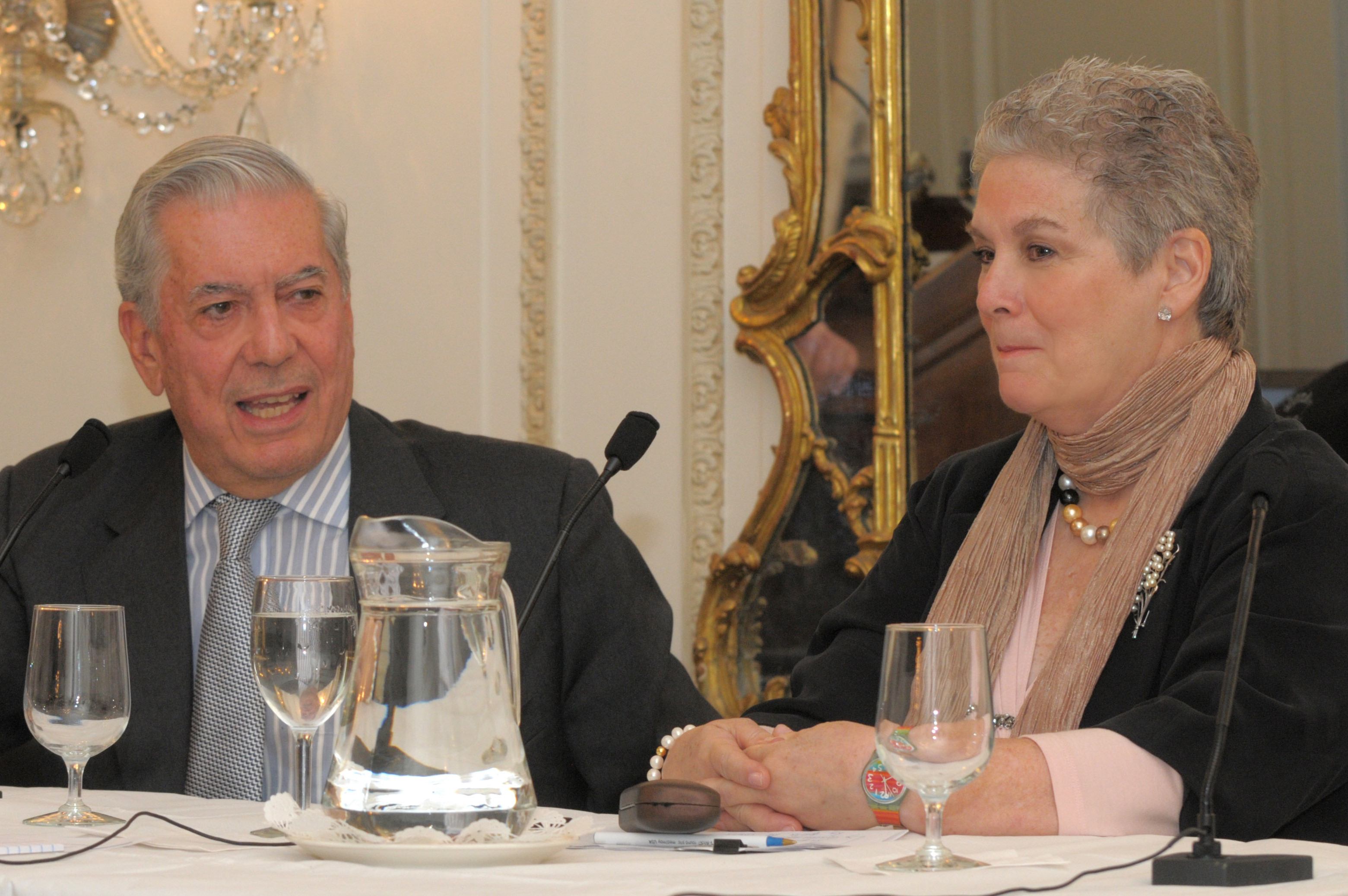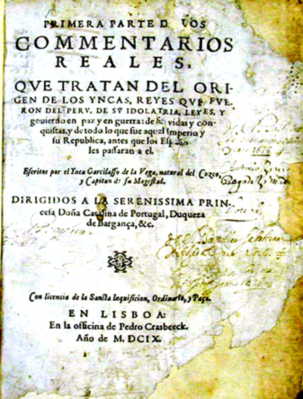Inca Garcilaso de la Vega (Cuzco, 1539 – Córdoba, 1616) was the son of a Spanish conquistador and an Incan princess who would become the first great Spanish-American writer and the first historian of the New World born in the Americas. “The Royal Commentaries,” his history of the Incan Empire and its conquest by Spain, is considered by many scholars to be the most elegant and complete accounting of the rise and fall of this civilization in what is now Peru.
Last month, Dr. Raquel Chang-Rodríguez, Distinguished Professor of Hispanic Literature and Culture at CCNY and the CUNY Graduate Center, helped organize a symposium to commemorate the 400th Anniversary of its publication in Lisbon in 1609. Sponsored by the Americas Society, CCNY and the CUNY Graduate Center, the two-day event drew more than 250 participants, including scholars of Garcilaso from four countries. A highlight was an interview Professor Chang-Rodríguez conducted with internationally acclaimed Peruvian writer Mario Vargas Llosa.

“The “Royal Commentaries” is a unique history written by a unique person,” she says. “Garcilaso offers a vision of Peru that is totally inclusive and takes into account the perspectives of Indios, Mestizos (mixed Spanish and Indian parentage), Criollos and Spaniards; a new land, a new country peopled by different groups aiming to live in harmony.”
Although he initially set out to write a commentary on the works of the Spanish chroniclers of the conquest, Garcilaso, who moved to Spain at age 19, produced a much greater work, Professor Chang-Rodríguez continues. “In order to reaffirm the duality of his Spanish and Incan background, and to write a singular rendition of events, he incorporated memories from his days living in Cuzco, details on Incan history related by an uncle on his mother’s side and recollections from childhood classmates.”
Also, because he spoke Quechua, the native language of the Inca people, as well as Spanish, he was able to penetrate the native culture, something the Spanish chroniclers were unable to do, she notes. “They (the chroniclers) wrote about many deeds, but they often misrepresented and misunderstood them because of the wide cultural gulf and their lack of linguistic skills.”
Professor Chang-Rodríguez’ hour-long interview with Mr. Vargas Llosa concluded the two-day conference, which was held October 15 – 16 at the CUNY Graduate Center and Americas Society headquarters on Park Avenue. “It was very exciting to have a conversation about a favorite writer with someone of his stature,” she says. “It indicates how important Garcilaso has been throughout the centuries in influencing writers and the way that Peru, his native country, has been viewed by many.
“For the times in which we live, Garcilaso’s message of inclusion, his faith in the power of the pen to represent events across cultural divides, is certainly something to reckon with.”
During the interview, Mr. Vargas Llosa explained that by taking the Spanish language and giving it Quechua syntax Garcilaso gave it a dimension that went beyond Spain. “He was able to master the language of the colonizers and infused it with singular beauty and elegance,” Professor Chang-Rodríguez adds.
“This empowered him and, later, others to challenge notions about who could write a proper historical account and who could use the Spanish language to do so. It also gave Spanish a transatlantic dimension.”
In addition to organizing the symposium with Daniel Shapiro from the Americas Society, Professor Chang-Rodríguez will edit the proceedings into a book published by the Fondo Editorial of the Catholic University of Peru. She also served as academic guest editor for a special edition of the journal “Review 79” on Garcilaso and his literary legacy that was published November 12.
This is the second volume she has edited on the works of Garcilaso. She also served as editor on “Beyond Books and Borders: Garcilaso de la Vega and La Florida del Inca,” (Bucknell University Press, 2006) a collection of writings about Garcilaso’s history of the expedition of Hernando de Soto, who landed in Florida in 1539 and explored much of what is now the Southeastern United States. In 2006, the collection appeared simultaneously in English and Spanish.
MEDIA CONTACT
Ellis Simon
p: 212.650.6460
e:
esimon@ccny.cuny.edu